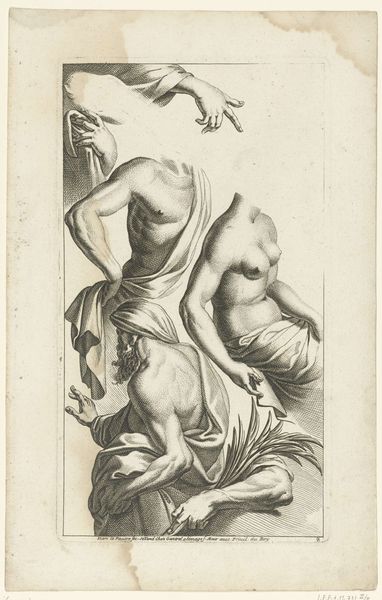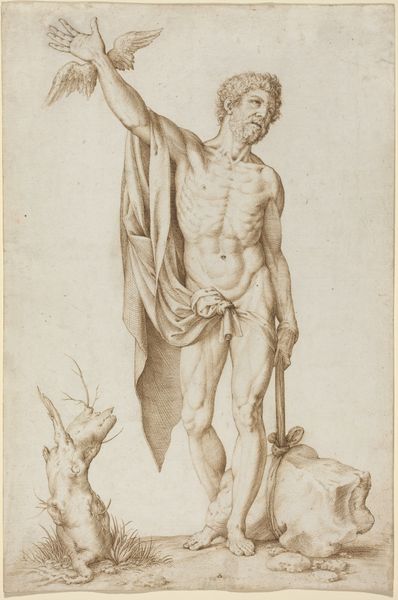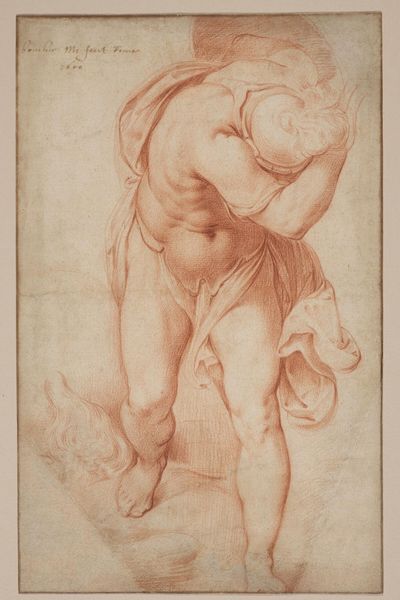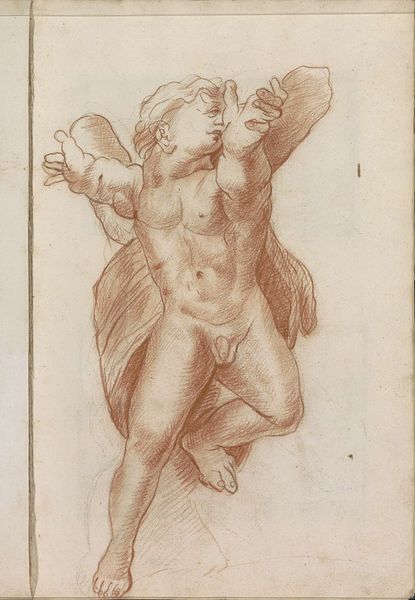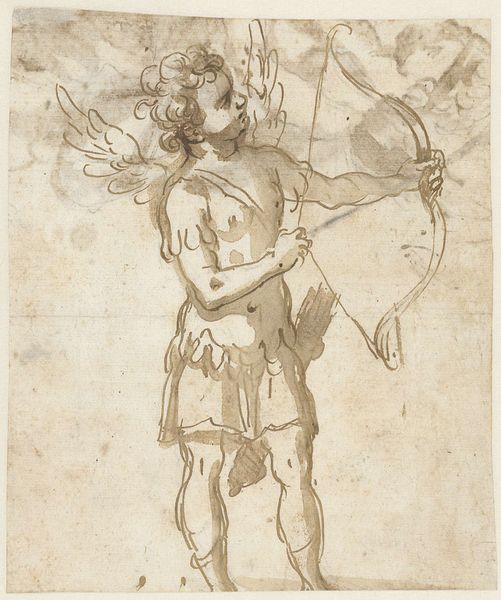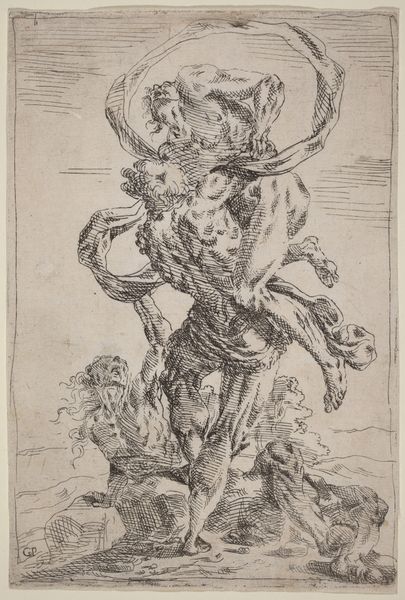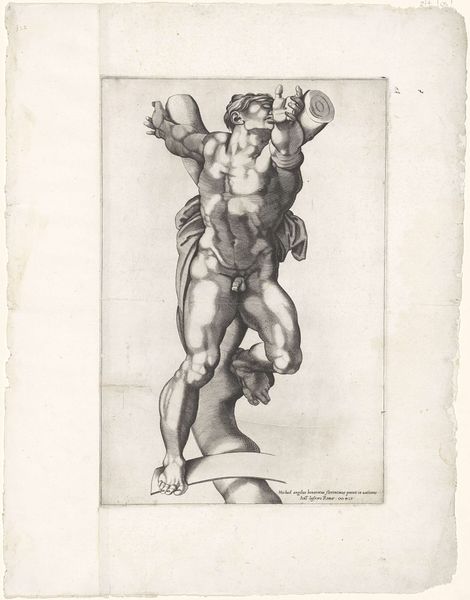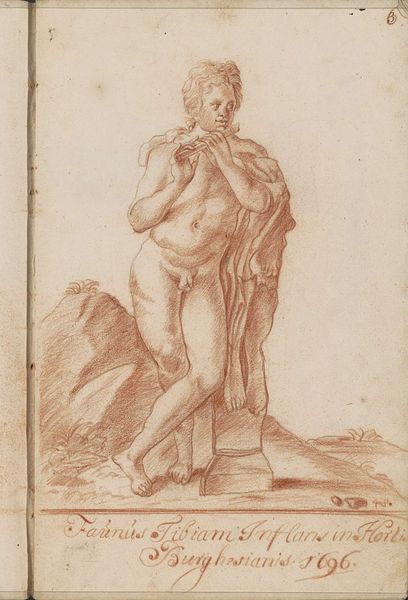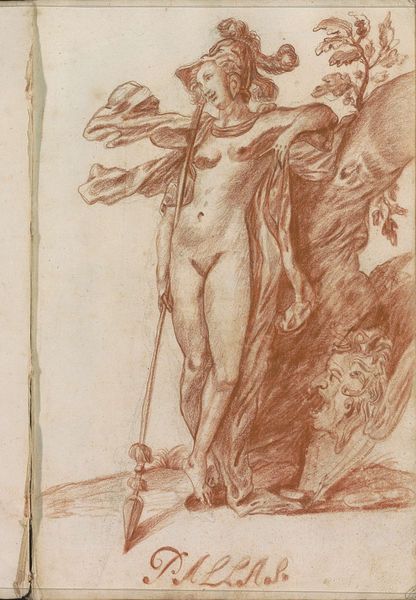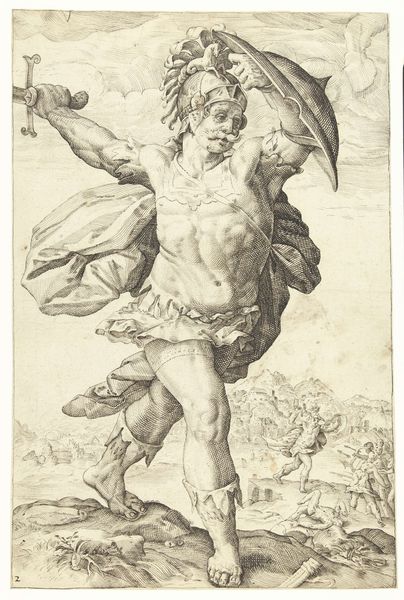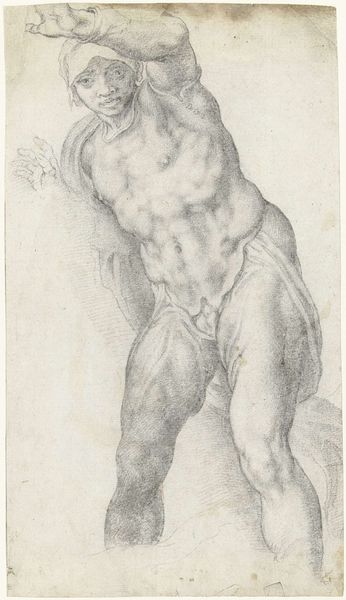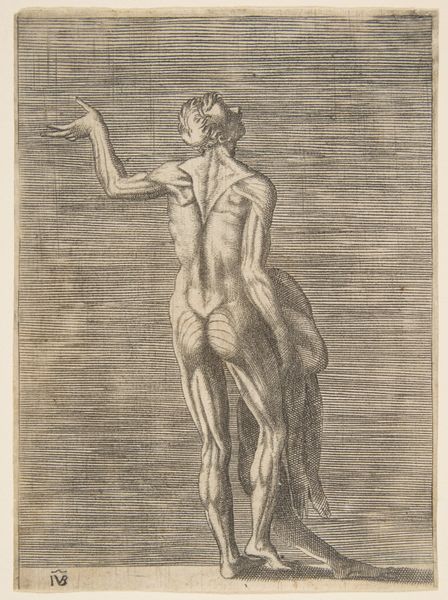
drawing, pencil
#
drawing
#
pencil sketch
#
figuration
#
pencil drawing
#
coloured pencil
#
pencil
#
history-painting
#
academic-art
Copyright: Rijks Museum: Open Domain
Editor: So here we have "Woman in a Toga with a Jug on her Head," a pencil drawing from 1696 by Hendrick van Beaumont. I'm immediately struck by the figure's pose – it feels very deliberate, almost like a sculptural study. What catches your eye? Curator: Immediately, the rendering of form. Notice how van Beaumont utilizes hatching and cross-hatching to build volume and delineate the figure’s drapery. The tonal gradations, achieved purely through variations in pencil pressure, are remarkably sophisticated. Do you observe how this technique contributes to a sense of classical idealism? Editor: I do. It feels very… academic. Like he's studying classical sculpture. But what about the red chalk? Does the medium affect how we perceive the work? Curator: The red chalk, or sanguine, lends a warmth and vitality absent in pure graphite drawings. Its inherent earthiness subtly undermines the idealized form, grounding the figure in a palpable reality. Observe how it interacts with the paper’s texture, creating a subtly dynamic surface. The artist skillfully manipulates a limited palette to suggest both weight and movement. Do you see how the draping of the toga directs the eye? Editor: Yes, from the jug on her head down to her feet. There’s definitely a sense of motion. So, it’s not just about representing a figure, but also about using the medium and composition to create a feeling. Curator: Precisely. The beauty lies in the inherent qualities and arrangement of its elements. The relationship between line, tone, and texture creates a formal harmony, a self-contained system of visual meaning. Editor: I see. It's a focused approach! This gives me a completely different lens through which to examine artwork. Curator: And it gives us another set of possibilities to appreciate artistic interpretation and skill.
Comments
No comments
Be the first to comment and join the conversation on the ultimate creative platform.
